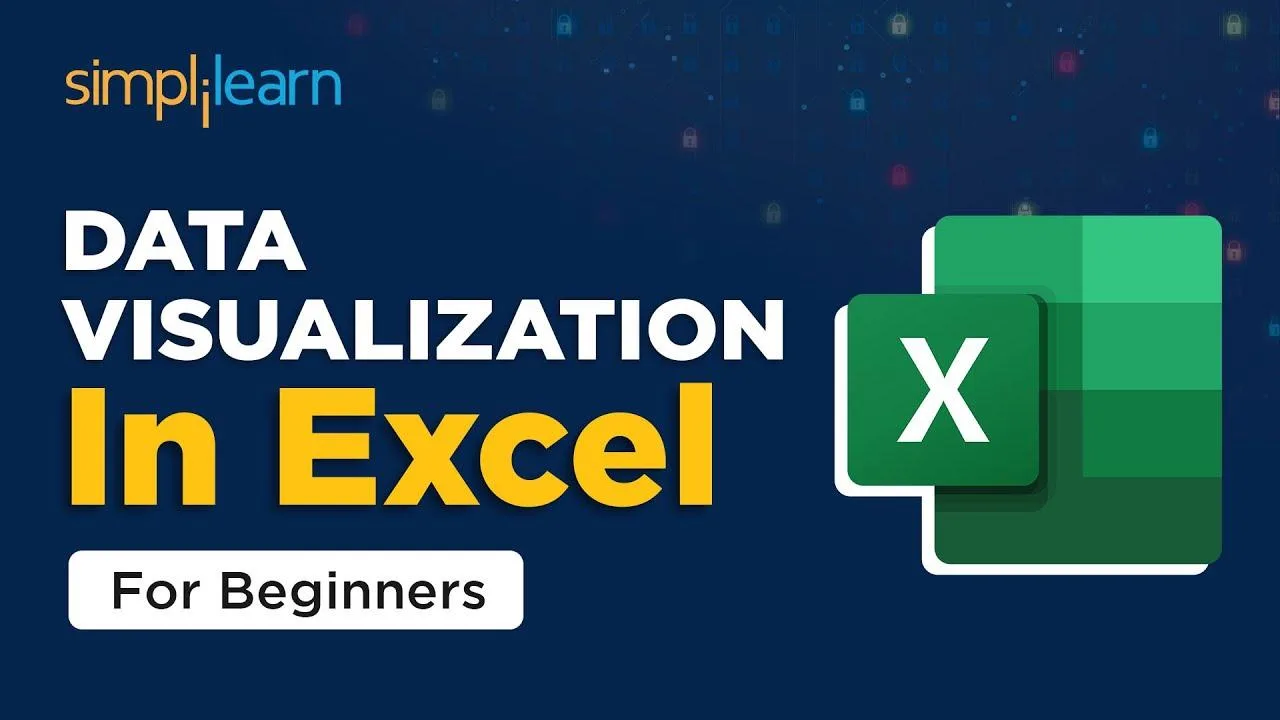Excel data visualization is not just about charts and graphs, it’s about telling stories with your data. With recommended charts and customizable options, Excel can help you visualize your data in a unique and impactful way. From waterfall charts to spark lines, heat maps to funnels, Excel has the tools to bring your data to life! 📊🌟 #Excel #DataViz
Table of Contents
ToggleIntroduction
In this guide, we will explore the world of data visualization in Excel. From building interactive charts to understanding different types of charts and graphs, we will cover it all. 📊
Enhance Your Data Skills
Are you passionate about growing your career in the field of data analytics? Simplilearn offers a data analytics program in collaboration with IBM. With this program, you can gain knowledge and expertise in prescriptive analytics, regression, classification, and more. Thousands of learners have transitioned into analytics roles or moved to higher-paying profiles after completing our courses. Check out the pinned comment and description below to find the analytics program that fits your experience and areas of interest.
Getting Started with Excel for Data Visualization
When it comes to data visualization, Excel is more than just another spreadsheet tool. It allows you to not only organize your data but also perform data analysis and create impressive charts. 📈
Recommended Charts in Excel
Excel comes with a plethora of charts available for data visualization. By using the "Recommended Charts" feature, Excel can automatically read your dataset and suggest the most suitable charts based on your data. These include column charts, pie charts, bar graphs, and more.
Key Takeaways:
- Excel offers a wide range of chart options for data visualization.
- The "Recommended Charts" feature analyzes your dataset and suggests suitable charts.
Types of Charts in Excel
Waterfall Chart
The waterfall chart in Excel provides a comprehensive overview of how data points increase or decrease over a given period. It effectively highlights the changes in your data from start to finish. 💧
Example:
If you have a dataset representing business expenses, a waterfall chart can visually showcase the increase or decrease in spending across different categories.
Sparklines
Sparklines are tiny charts that fit in a single cell and give a visual representation of data trends. They are perfect for representing multiple data points in a confined space.
Key Takeaways:
- Sparklines offer a convenient way to display trends within a limited space.
- They can be used to represent data changes over time, such as sales trends.
Heat Maps
Excel allows you to create heat maps to visually represent the performance of your data. By using color scales, you can quickly identify the highest and lowest performing data points within your dataset.
Example:
A heat map can help analyze revenue growth, sales performance, and seasonal variations in business data.
Funnel Chart
The funnel chart in Excel is ideal for visualizing the progressive reduction of data as it moves through different stages of a process. It’s useful for showcasing data flow in a sequential manner.
Key Takeaways:
- Funnel charts are excellent for representing data flow in a progressive manner.
- They are commonly used to depict sales pipelines and marketing conversion rates.
Tree Chart
Similar to a heat map, a tree chart displays hierarchical data structures in a visual format. It represents groups of data points based on various levels within the dataset.
Example:
A tree chart can be used to showcase the product categories within a retail business, each branching out to display subcategories and individual products.
Conclusion
Excel offers a diverse set of tools for creating impactful visual representations of your data. Whether you need to analyze financial trends, track sales performance, or showcase business metrics, Excel’s charting features can bring your data to life. 💻
Key Takeaways:
- Embracing data visualization in Excel can immensely benefit your data analysis and presentation skills.
- Explore various chart types to effectively convey insights from your data.
Are you ready to dive deeper into the world of data visualization?
Please share your thoughts and any specific requests for upcoming content in the comments section below. Our team is eager to assist you on your data visualization journey. 🚀
Explore Our Certification Programs
Continuous learning is essential for advancing in your career. Whether you’re a seasoned professional or aspiring to enter the tech industry, our impressive catalog of certification programs can elevate your skills. Explore domains such as cloud computing, cyber security, digital marketing, and more. Click the link in the description to learn more and take the next step in your career. 🎓
Stay Connected with Simplilearn
For more insightful content to enrich your career journey, subscribe to our YouTube channel and stay tuned for the latest updates. Thank you for watching, and we look forward to accompanying you on your path to success! ✨
Related posts:
- ARM – M: From system reset to the main program | A casual podcast about embedded systems!
- Bugzilla – a web-based general-purpose bug tracker and testing tool originally developed and used by the Mozilla project.
- Tutorial 3.1 – How to import or recover a DVD rental database into a PostgreSQL server using pgAdmin on Windows 11.
- Improved Object Detection Technique with Faster-RCNN Model
- OpenAI has launched a new AI video tool. However, there are some issues with it.
- Get the latest uncensored updated FaceGen Ai WebUI installed locally with just 1 click!






